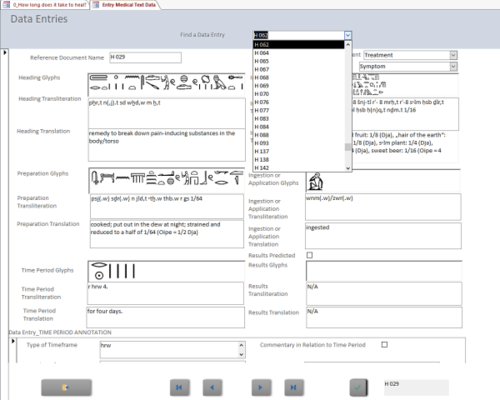How long will it take to heal? Time and medical practice in Ancient Egypt
The aims of the test topic are to undertake a close reading of Ancient Egyptian medical texts written in hieratic script on papyri from ca. 1900 BC onwards in order to investigate both the Ancient Egyptian awareness and conceptualisation of time in relation to the healing process.
Consequently, the project intends specifically:
- To analyse all cases in Egyptian medical texts in which a time frame is specified: What healing periods are mentioned in the medical texts? Is any commentary (or specification) about the time frame provided?
- To create a typology of the kinds of healing practices described in these texts that are linked with time frames. What kinds of diseases and symptoms were they linked to?
- To compare these Egyptian perspectives to modern perspectives of healing times and healing processes.
This projects starts from the following hypothesis:
- As these texts are so-called “Sammelhandschriften”, namely, medical compendia comprising a range of medical texts from different genres (recipes, spells, descriptions, etc.), it is very likely that there may be a genre-based distinction where time frames are concerned – perhaps one genre describes time frames, and another does not?
- The very dominant time frame (4 days) may be a theoretical time frame, whereas others may be more realistic.
- There may be some significant differences not only within single texts but also across the whole corpus of medical texts.
The outcome so far has been the completion of the database by the contractor. Moreover, the project staff have in the testing stage been able to address some of the preliminary hypotheses: For instance, the time frames are connected almost exclusively to recipes, and hardly at all to spells. Also, the Hearst Papyrus has extremely little variations in the healing times. Across the corpus, on the other hand, there seems to be a significant amount of variation: approximately one quarter of the recipes provide an alternate time frame to the standard four days. Although the fact that many diseases (and even some physiognomic processes) remain untranslated will mean that some cases remain inexplicable. There is great potential for combination with another current project Camilla Di-Biase Dyson is conducting on the kinds of texts used as a basis for these collections of medical texts on papyrus. Concretely, the database is going to help analyse if parallel texts have identical healing times, which may illuminate whether they have a common “Vorlage”.

